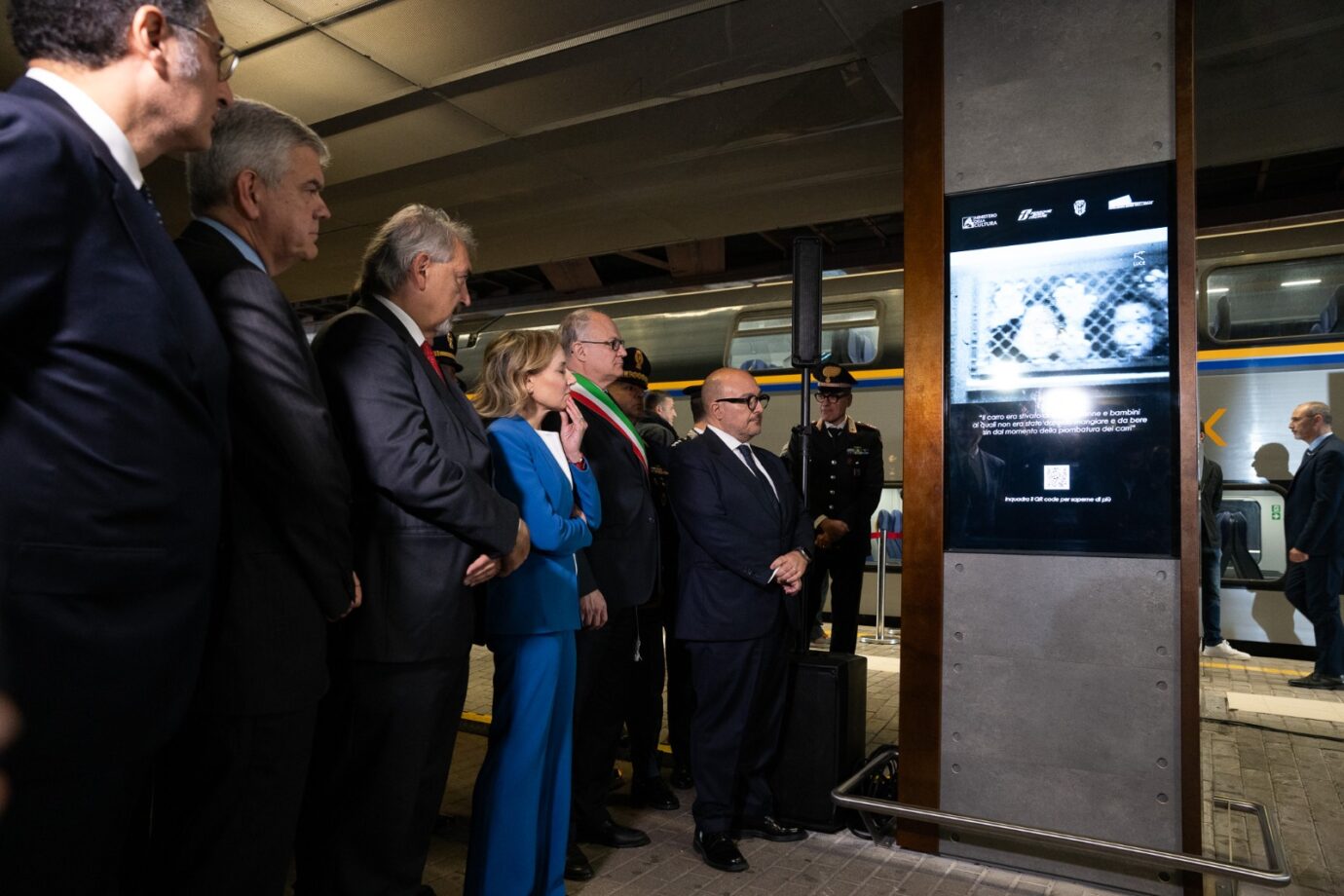ROME – A multimedia totem to tell the story of October 16, 1943

On October 18, 1943, Rome’s police chief Giovanni Travaglio informed the Ministry of the Interior that the train “with 28 wagons” in which were crammed the more than 1,000 Roman Jews captured in the previous hours by the Nazi-Fascists had just left Rome from Tiburtina station. “No incidents,” he remarked, had occurred at the start of the convoy bound for Auschwitz-Birkenau, expected at its destination five days later. Just 16 will return from the lager. Fifteen men and one woman, Settimia Spizzichino, with a message aimed at shattering indifference: “I want to remember everything of my life, even that terrible experience called Auschwitz. That’s why, I think, I came back: to tell.”
“Meditate that this was,” reads the plaque installed a few years ago at Platform 1 by the City of Rome, the National Association of Italian political deportees – ANED and the Jewish Community. The plaque is now joined by a new tool, a multimedia totem at the Roma Tiburtina station to help passersby reflect on the wounds of the past and move more consciously through those places. Already in February 2023, following up on a request by life senator Liliana Segre, a similar totem was placed at platform 21 in Milan station. “Today we are adding another brick in the path of Remembrance, to say no to all forms of racism and anti-Semitism,” said Culture Minister Gennaro Sangiuliano, inaugurating the post together with Lazio Region President Francesco Rocca and Rome Mayor Roberto Gualtieri. With them were the Jewish Community President Victor Fadlun, the Shoah Museum Foundation President Mario Venezia, Ferrovie dello Stato Group CEO Luigi Ferraris and senator Ester Mieli.
The project provides voices and memories of the 16 survivors. There is, for example, Settimia Spizzichino who recounts, “They made us get off at Tiburtina Station. We were pushed onto a train that stopped on a dead platform; they loaded us onto cattle cars. And when we got on, they closed them and plunged them.” Or Arminio Wachsberger, from Fiume (an Adriatic port city that was considered the first symbol of Italy’s new Fascist Empire and is now called Rijeka and part of Croatia), who recalls the train’s next stop in Padua: “Our throats were now parched and we were all terribly thirsty. We begged loudly for water, but the sentries stood there adamantly, pretending not to hear us.” Thus, instead, Lello Di Segni, the last living witness to the raid, who passed away in 2018 at the age of 92: “The wagon had become a latrine because we were forced to relieve ourselves in the corners. I remember the most terrible thing was thirst.”
